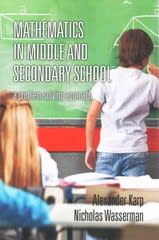Question
An occasionally dishonest casino uses two kinds of dice. A fair dice that has 1/6 probability of rolling any number, and a loaded dice that
An occasionally dishonest casino uses two kinds of dice. A fair dice that has 1/6 probability of rolling any number, and a loaded dice that has 1/2 probability to roll a 3 and 1/10 probability to roll any other number. The probability that the casino switches from the fair to loaded dice is 0.01 and the probability of switching back from loaded to fair is 0.25.
Sequentially record dice by Q={q1, q2, q3...}, and numbers rolled by O={o1,o2,o3...}, for
example:q1=F, o1=2 means the first die is Fair, and by rolling the first die the number observed
is 2. We also know P(q1=F)=P(q1=L)=0.5.
Question:
Suppose we observe O={ o1=4,o2=2,o3=4,...,o1000=6} but do not observe Q={q1,q2,...q1000}, and after some calculation we know P(O,q1000=F)=a, P(O,q1000=L)=b, (0
Step by Step Solution
There are 3 Steps involved in it
Step: 1

Get Instant Access to Expert-Tailored Solutions
See step-by-step solutions with expert insights and AI powered tools for academic success
Step: 2

Step: 3

Ace Your Homework with AI
Get the answers you need in no time with our AI-driven, step-by-step assistance
Get Started


